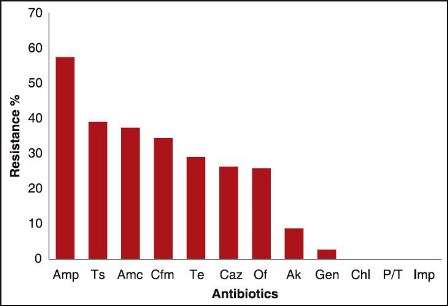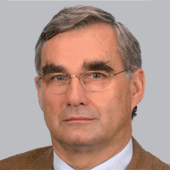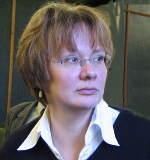Sessions/Tracks
It is our greatest pleasure to welcome you to the official website of Annual Conference on Antimicrobials and Drug Resistance, that aims at bringing together the Professors, Doctors, Researchers, Clinicians, Educators, Program developers to provide an international forum for the dissemination of original research results, new ideas and practical development experiences which concentrate on both theory and practices in our Medical meetings. The conference will be held in May 30-June 1, 2017 at Las Vegas, USA. The theme of the conference is around,
“The Antimicrobial Resistance Threat: Are We Heading Towards a Post-Antibiotic Era?”
ConferenceSeries Ltd 300+ Conferences Every Year across USA, Europe & Asia with support from 1000 more scientific societies and Publishes 500+ Open access journals which contains over 50,000 eminent personalities, reputed scientists as editorial board members.
In line with the Annual Conference on Antimicrobials and Drug Resistance addressing the most recent advances across the spectrum of Medicine research from basic sciences to public health, conference highlights will include Antimicrobials ,Antimicrobial resistance ,Antibacterial agents, Antiviral drugs, Antifungal and Antiparasitic agents, Selective toxicity ,Antimicrobial agents in food and agriculture, Viral and Bacterial Outbreaks, Industrial and Applied Microbiology, Microbial genomics, Biomarkers in clinical research, Antimicrobial agents in veterinary medicine, Antimicrobial stewardship, Pharmacy and medicinal chemistry ,Public Health.
Track 1: Antimicrobials
An antimicrobial is an agent that kills microorganisms or inhibits their growth. They are classified according to their mode of action on specific microorganism .Depending on the range of bacterial species susceptible to these agents antibacterials are classified as broad spectrum, intermediate-spectrum, or narrow- spectrum. Non–pharmaceuticals antimicrobial gives a wide range of chemical and natural compounds used as antimicrobials. Organic acids are used widely as antimicrobials in food products. The Immunology of host defence peptides gives diverse actions of HDPs.The use and misuse of antimicrobial drugs accelerates the emergence of drug-resistant strains. Post-antibiotic era refers to a time when a number of infectious diseases will be unresponsive to antibiotic treatments.
Related Conferences: 2nd Conference on Antimicrobial Agents and Chemotherapy, December 08-09, 2016 San Antonio, USA; 6th Clinical Microbiology Conference, October 20-22, 2016 Rome, Italy; 5th Conference on Microbial Physiology and Genomics, September 29-30, 2016 London, UK; 7th World Congress on Applied Microbiology, November 10-12, 2016 Istanbul, Turkey; World Antimicrobial Congress, September 8-9, 2016 Washington, DC, USA; EPHA 7th Annual Conference on Antibiotic Resistance, Politics and Public Health, September 8, 2016 Brussels, Belgium; 4th Conference on responsible use of antibiotics in animals, September 26-28, 2016 The Hague, Netherlands;Conference on Antimicrobial resistance in biofilms and options for treatment, October 05-07, 2016 Ghent, Belgium; 3rd Annual Microbiology and Infectious Diseases Congress, October 11-12, 2016 Singapore; BEAM Alliance (Biotechs from Europe innovating in anti-microbial resistance), ReAct – Action on Antibiotics, Transatlantic task force on urgent antimicrobial resistance (TATFAR), Global Antibiotic Resistance Partnership(GARP), British Pharmacological Society (BPS), American Society for Microbiology (ASM)
Track 2: Antimicrobial resistance
Multidrug resistant (MDR) are those microbes which are resistant to multiple antimicrobials .Resistant microorganisms (compiling fungi, bacteria, parasites and viruses) have the ability to withstand effects of antimicrobial drugs. Irrational use of antimicrobial drugs rapidify the origin of drug-resistant strains. Poor infection control practices, inappropriate food-handling and inadequate sanitary conditions leads to further spread of antimicrobial resistance. Diagnosis of antimicrobial drug resistance is evaluated by lab tests that makes it difficult for the the isolated microbes to grow and survive in the presence of the drug. Antimicrobial chemotherapy refers to the use of antimicrobial medicines to treat infection. Microbial immunology refers to the interrelationship among infectious agents and their hosts, with microbial and viral pathogenesis and the immunological host response to infections.
Related Conferences: 7th World Conference on Applied Microbiology, November 10-12, 2016 Istanbul, Turkey; Conference on Infectious Diseases and Diagnostic Microbiology, October 3-5, 2016 Vancouver, Canada; 6th Clinical Microbiology Conference, October 20-22, 2016 Rome, Italy; 2nd World Congress on Infectious Diseases, August 24 - 26, 2016 Philadelphia, Pennsylvania, USA; EPHA 7th Annual Conference on Antibiotic Resistance and Public Health, September 8, 2016 Brussels, Belgium; 4th Conference on Responsible use of Antibiotics in animals, September 26-28, 2016 The Hague, Netherlands; Conference on Antimicrobial Resistance in biofilms and options for treatment, October 05-07, 2016 Ghent, Belgium; 3rd Annual Microbiology and Infectious Diseases Congress, October 11-12, 2016 Singapore; Conference on Developing Antibiotic Alternatives: A Discussion Of New Approaches To Overcoming Antimicrobial Resistance, November 8-11, 2016; Global Antibiotic Resistance Partnership (GARP), British Pharmacological Society (BPS), American Society for Microbiology (ASM), The World Alliance Against Antibiotic Resistance (WAAAR), Antibiotic Research UK (ANTRUK), Alliance for the Prudent Use of Antibiotics (APUA)
Track 3: Antibacterial agents
An antimicrobial agents are those that kills or inhibits the growth of microorganism, similarly antibacterials are effective against bacteria.. According to different groups of microorganism the action of antimicrobial medicine can be seen. Antimicrobial drugs by its mechanism of action help in treatment as well as prevention from bacterial infection .Antibiotic prophylaxis refers to the prevention of infection complications using antimicrobial therapy . Antibacterials are used to treat bacterial infections. The hazards to humans and other animals from antibacterials is generally less if compared. However, continuous use of certain antibacterials gives side effects like it decrease the number of gut flora, which may have a bad impact on health etc.
Related Conferences: World Conference on Infection Prevention and Control, November 28-29, 2016 Spain, Annual Conference on Rare Diseases and Orphan Drugs, October 26-27, 2016 USA, Infectious Diseases Conferences Europe, Frankfurt Germany, September 5-6 2016, 3rd International Conference on Chronic Obstructive Pulmonary Disease (COPD), July 11-12, 2016 Australia, 4th International Congress on Bacteriology and Infectious Diseases, May 16-18, 2016 USA, 43rd Annual Meeting of the Infectious Diseases Society for Obstetrics and Gynaecology, Aug 11th - 13th, 2016 USA, Infectious Diseases Society of Ireland Annual Scientific Meeting 2016, May 12th - 14th, 2016 Dublin, 34th Annual Meeting of the European Society for Paediatric Infectious Diseases, May 10th - 14th, 2016 UK, Infection Prevention Society 6th Annual Conference 2016, Sep 26th - 28th, 2016 UK, Status Quo of Brain Infections, Sep 4th- 6th, 2016 Turkey.
Track 4: Antiviral drugs
Antiviral drugs are the medication used particularly for treating viral infections. Mostly antiviral drug design is to identify targets like viral proteins, or its parts, that can be disabled. These "targets" should be as unlike parts of proteins in humans as possible, to reduce the likelihood of various possible side effects. The targets should also be common among different species of virus in the same family or across many strains of a virus, so a single drug can have broad effectiveness through its mechanism of action. Almost all anti-microbials, including anti-virals, are subject to drug resistance as these pathogenic organism mutate as time travel, resulting less susceptible to the treatment therefore designing safe and effective antiviral drugs is difficult, because viruses always use the host's cells to replicate and increase their count.
Related Conferences: 6th Clinical Microbiology Conference, October 20-22, 2016 Rome, Italy; International Conference and Expo on Industrial Microbiology August 01-03, 2016 Frankfurt; European Microbiology Conference August 04-06, 2016 Frankfurt, Germany; 2nd International Conference on Parasitology August 01-03, 2016 Manchester, UK; International Conference on Mycology September 12-14 San Antonio, USA; 26th European Congress of Clinical Microbiology and Infectious Diseases (ECCMID 2016) June 16-20, 2016 Boston, USA; Anaerobe 2016 July 11-14,2016 Nashville, USA; Microbe 2016, September 23-25, 2016 Sheffield, UK
Track 5: Antifungal and Antiparasitic agents
Antifungal and Antiparasitic are class of medication for pharmaceutical fungicide or fungistatic used to treat and prevent mycoses and treatment of parasitic diseases, such as those caused by helminths etc ,respectively. Invasive fungal infections causes significant health problem in immune compromised patients. So as the clinical manifestations vary and can range from colonization in allergic broncho pulmonary disease to active infection in local aetiologic agents. Therefore drug dose monitoring is necessary to ensure the therapeutic levels achieved for optimal clinical efficacy. Various Immunomodulatory properties have been identified in various antiparasitic agents and their potential therapeutic applications have been recognized. Antiparasitic resistance is the genetic ability of parasites to survive the effects of an antiparasitic drug to which they were previously susceptible. Practical and effective strategies to combat antiparasitic resistance are some what critical.
Related Conferences: 3rd Annual Microbiology and Infectious Diseases Congress, October 11-12, 2016 Singapore; BEAM Alliance (Biotechs from Europe innovating in anti-microbial resistance), ReAct – Action on Antibiotics,Transatlantic task force on urgent antimicrobial resistance (TATFAR), Infectious Diseases Society of Ireland Annual Scientific Meeting 2016, May 12th - 14th, 2016 Dublin, 34th Annual Meeting of the European Society for Paediatric Infectious Diseases, May 10th - 14th, 2016 UK, Infection Prevention Society 6th Annual Conference 2016, Sep 26th - 28th, 2016 UK, Status Quo of Brain Infections, Sep 4th- 6th, 2016 Turkey.
Track 6: Selective toxicity
Selective toxicity means the injuring of one kind of living matter without harming some other kind ,even though the two are in intimate contact. Toxicosis potential is usually determined more by the multitude of related factors than by actual toxicity of the toxicant. Mechanisms of staphylococcal enterotoxin-induced emesis. Tetanospasmin is one of the most powerful neurotoxins known. The tetanospasmin toxin is a zinc-dependent metalloproteinase others like botulinum toxin has high specificity and irreversible effects. Host cell with selective toxicity can be seen in E.coli, HIV and Influenza toxins etc. There are topical antibiotics to deal with topical antimicrobial toxicity which are directly applied to cultured human fibroblasts which quantitatively assess their cytotoxicity.
Related Conferences: World Congress on Microbiology, November 28-29, 2016 Valencia, Spain; International Conference on Water Microbiology & Novel Technologies- July 18-20, 2016 Chicago, USA; 3rd Microbiologists Annual meeting -August 15-17, 2016 Portland, USA; 2nd world congress on Beneficial Microbe -September 23-25, 2016 Phoenix, USA; Microbial Physiology conference- September 29-30, 2016; London, UK; Infectious Diseases Conference- Oct 3-5, 2016 Vancouver, Canada; International Conference on Medical Parasitology 2016 , October 17-19, 2016, Houston, USA; International Conference on Human Papillomavirus – October 20-21, 2016, Chicago, USA; Clinical Microbiology Conference- October 24-26, 2016 Rome, Italy; 7th World Congress on Applied Microbiology, November 10-12, 2016 Istanbul, Turkey, Microbiology Society , International Union of Microbiological Societies , , Federation of European Microbiological Societies European Union.
Track 7: Antimicrobial agents in food and agriculture
Antimicrobial agents has been used in veterinary medicine and animal husbandry veterinary medicine which has resulted in healthier and more productive farm animals, which ensures the health and welfare of both animals and humans. There are several benefits of food processing which include toxin removal, preservation, easing marketing and distribution tasks, and increasing food consistency and makes many kinds of foods safe to eat by de-activating spoilage and pathogenic micro-organisms shelf life of food product and ensure food saftey. As part of process control activities in the food manufacturing plant, antimicrobial agents have been successfully applied, both in the product formulation stage as direct food additives designed to reduce or eradicate pathogens and benificial in antimicrobial proteins. Apart from this it has various uses in plant agriculture.
Related Conferences: International Conference on Food Microbiology August 08-10, 2016 Birmingham, UK; 2nd World Congress on Beneficial Microbes: Food, Pharma, Aqua & Beverages Industry September 23-25, 2016 Phoenix, USA; International Conference on Food and Beverage Packaging June13-15, 2016 Rome, Italy; XXX Latin AmericaCongress of Food Microbiology and Hygiene, COLMIC 2016, September 27-30, 2016 Medellin, Colombia; Food Micro 2016 July 19-22, 2016 Dublin, Ireland; 5th European Nutrition and Dietetics Conference June 16-18, 2016 Rome, Italy
Track 8: Viral and Bacterial Outbreaks
Ebola, is a viral hemorrhagic fever of other primates and mostly humans. The Zika virus belongs to family Flaviviridae and genus Flavivirus, and is thus related to many disease like dengue, yellow fever etc in one or other way .Zika is spread by the female Aedes aegypti mosquito, which is active mostly in the daytime The potential societal risk of Zika can be restricted by delimiting the distribution of the mosquito species that transmit it. The highly pathogenic influenza A virus subtype H5N1 is an emerging avian influenza virus that is causing global concern as a potential pandemic threat. Tuberculosis is an infectious disease caused by the bacterium Mycobacterium tuberculosis (MTB). Therefore all the bacteria .and viruses Control of outbreaks requires coordinated medical services, alongside a certain level of community engagement
Related Conferences: Global Medical Microbiology Summit &Expo, November 28-30,2016; International Conference on Water Microbiology & Novel Technologies- July 18-20, 2016 Chicago, USA; 3rd Microbiologists Annual meeting -August 15-17, 2016 Portland, USA; 2nd world congress on Beneficial Microbe -September 23-25, 2016 Phoenix, USA; Microbial Physiology conference- September 29-30, 2016; London, UK; Infectious Diseases Conference- Oct 3-5, 2016 Vancouver, Canada; International Conference on Medical Parasitology 2016 , October 17-19, 2016, Houston, USA; International Conference on Human Papillomavirus – October 20-21, 2016, Chicago, USA; Clinical Microbiology Conference- October 24-26, 2016 Rome, Italy; 7th World Congress on Applied Microbiology, November 10-12, 2016 Istanbul, Turkey, Microbiology Society , International Union of Microbiological Societies , Federation of European Microbiological Societies European Union,
Track 9: Industrial and Applied Microbiology
Industrial antimicrobial agents are the chemicals used to prevent the adverse consequences of microbiological activity in various processes and products formation. They are mainly targeted against mold, bacteria, and fungi. There is wide range of Applications antimicrobial agents in industry. Bioremediation is a “treatment that uses naturally occurring organisms to break down intoxicated substances into less toxic or non toxic substances .Likewise, in industrial fermentation there is intentional use of microorganisms such as bacteria and fungi to make products useful to humans. Fermented products though have applications as food but it is also used in general industry .Along with this there are other application of microbes-powerful cleaners, agricultural improvers.
Related Conferences: 5th Conference on Global Food Safety, December 05- 07, 2016 San Antonio, USA; 3rd Conference on Aquaculture and Fisheries, September 29-October 01, 2016 London, United Kingdom; Global Veterinary Microbiology Summit and Expo, October 17-19, 2016 Chicago Illinois, USA; 15th Conference on Food Processing and Technology, November 07-09, 2016 Istanbul, Turkey; Conference on Antimicrobial resistance in biofilms and options for treatment, October 05 - 07, 2016 Ghent, Belgium;3rd Annual Microbiology and Infectious Diseases Congress, October 11-12, 2016 Singapore; Conference on Developing Antibiotic Alternatives: A Discussion Of New Approaches To Overcoming Antimicrobial Resistance, November 8-11, 2016; Conference On Contemporary Antimicrobial Research, November 14-17, 2016 Silchar, India; ASM Conference on Antibacterial Development, December 11-14, 2016 Washington, DC, USA; Animal Welfare Approved (AWA),American Academy of Pediatrics, American Medical Association, Compassion in World Farming (CIWF), Center for Science in the Public Interest (CSPI), Center for Food Safety
Track 10: Microbial genomics
Microbial Genomics provide approaches to understand microbial evolution, population genomics, outbraks and epidemiological investigations, , metagenomic and whole transcriptome studies, and bioinformatic analysis, Genes and Genomes, Transcription and translational regulations etc. A gene mutation is a permanent alteration in the DNA sequence that makes up a gene, such that this sequence is unique in different people. Pharmacogenomics (PGx) aims to optimize drug efficacy and minimize toxicity on the basis of improved understanding of genomic variants influence drug response. Clinical Genomics gives innovative products for colorectal cancer diagnosis. Regulation of gene expression includes a wide range of mechanisms. Genetic engineering, also called genetic modification, is the direct manipulation of an organism's genome using biotechnology futher host-microbe interactions in disease stategives the idea of pathogenomics.
Related Conferences: 4th conference on Personalized Medicine and Molecular Diagnostics, September 22-24, 2016 Phoenix, USA; 2ndInternational Conference on Drug Discovery and Designing, November 08-09, 2016 Istanbul, Turkey; 4thConference on Clinical Pharmacy, November 07-09, 2016 Las Vegas, Nevada, USA; Global Pharmaceutical Industry Summit, August 22-24, 2016 Vienna, Austria; Conference on Developing Antibiotic Alternatives: A Discussion Of New Approaches To Overcoming Antimicrobial Resistance, November 8-11, 2016; Conference On Contemporary Antimicrobial Research, November 14-17, 2016 Silchar, India; ASM Conference on Antibacterial Development, December 11-14, 2016 Washington, DC, USA; , Sweden; Antimicrobial Conference, September 8-9, 2016 Washington, USA; The Pew Charitable Trusts, The Humane Society of the United States(HSUS), Food Animal Concern Trust (FACT), Infectious Diseases Society of America (IDSA), U.S. Food and Drug Administration (FDA), Center for a Livable Future (CLF)
Track 11: Biomarkers in clinical research
Biomarkers are physical, functional or biochemical indicators of physiological or disease processes.( There are various types of biomarkers .) These key indicators can provide vital information in determining disease prognosis, in predicting of response to therapies, adverse events and drug interactions, and in establishing baseline risk. The incorporation of biomarker studies into early drug trials is complex. Thus the decision to proceed with studies of biomarkers should be based on balancing the strength of science, assay robustness, feasibility, and resources with the burden of proper sample collection on the patient and potential impact of the results on drug development.
Related Conferences: 6th Clinical Microbiology Conference, October 20-22, 2016 Rome, Italy; International Conference and Expo onIndustrial Microbiology August 01-03, 2016 Frankfurt; European Microbiology Conference August 04-06, 2016 Frankfurt, Germany; 2nd International Conference on Parasitology August 01-03, 2016 Manchester, UK; International Conference on Mycology September 12-14 San Antonio, USA; 26th European Congress of Clinical Microbiology and Infectious Diseases (ECCMID 2016) June 16-20, 2016 Boston, USA; Anaerobe 2016 July 11-14,2016 Nashville, USA; Microbe 2016, September 23-25, 2016 Sheffield, UK
Track 12: Antimicrobial agents in veterinary medicine
The use of antimicrobials in animals are closely parallels to the discovery and usage in humans. Like Sulfonamide was the first antimicrobial to be introduced to food animal medicine. Antibiotics are given to food animals for growth promotion and prophylactic medication. In other hand ,epidemiology of antimicrobial-resistant microorganisms at the human–animal interface involves complex and largely unpredictable systems that include transmission routes of resistant bacteria as well as resistance genes and the impact of antimicrobial selective pressures in several reservoir. There is an environmental impact of Antibiotics and their metabolites (degradation products) through antibiotic-laden manure or direct deposition of manure by grazing animals. . Antibiotics that reach the environment ,only that proportion will remain biologically active. Low subtherapeutic concentrations of antibiotics that accumulate over time may have profound effects on some ecosystems
Related Conferences: Infectious Diseases Conference- Oct 3-5, 2016 Vancouver, Canada; Clinical Microbiology Conference- October 24-26, 2016 Rome, Italy; International Conference on Immunology, October 24-26, 2016, Chicago, Illinois, World Congress on Microbiology, November 28-29, 2016 Valencia, Spain; International Conference on Parasitology, August 1-3, 2016, Manchester, UK; 3rd Global Microbiologists Annual meeting -August 15-17, 2016 Portland, USA; 2nd world congress on Beneficial Microbe -September 23-25, 2016 Phoenix, USA; Microbial Physiology conference- September 29-30, 2016; London, UK; Alabama Veterinary Medical Association, Amercian Society of Animal Science, Association of Exotic Mammal Veterinarians (AEMV), Association of Pet Behaviour Counsellors
Track 13: Antimicrobial stewardship
Antimicrobial stewardship deals with well organised program that promotes the judicious use of antimicrobials (including antibiotics) , reduces microbial resistance, improves patient outcomes and decreases the spread of infections caused by multidrug-resistant organisms. Antimicrobial Stewardship influences to do safe and appropriate use of antimicrobials i.e rationalise use of Antibiotic. Basically it emphasis more on Safety and Quality. It has research priorities like a clear research motive highlighting the most important current knowledge gaps and new data to improve future containment initiatives.
Related Conferences: 5th Conference on Microbial Physiology and Genomics, September 29-30, 2016 London, UK; 6th Clinical Microbiology Conference October 20-22, 2016 Rome, Italy; Drug Formulation Meeting September 05-07, 2016 Beijing, China; 2nd Conference on Drug Discovery and Designing, November 08-09, 2016 Istanbul, Turkey; Conference in Antimicrobial Stewardship in Veterinary Medicine, September 10-11, 2016 Gothenburg, Sweden; World Antimicrobial Congress, September 8-9, 2016 Washington, DC, USA; EPHA 7th AnnualConference on Antibiotic Resistance and Public Health, September 8, 2016 Brussels, Belgium; 4th conference on the responsible use of antibiotics in animals, September 26-28, 2016 The Hague, Netherlands; Conference on Antimicrobial resistance in biofilms and options for treatment, October 05-07, 2016 Ghent, Belgium; Global Antibiotic Resistance Partnership (GARP), British Pharmacological Society (BPS), American Society for Microbiology (ASM)
Track 14: Pharmacy and medicinal chemistry
Drug design can be defined as the approach of finding drugs by design, based on their biological targets and the prediction of small molecules binding to it (pharmacophore, docking, QSAR,…) Antimicrobial resistance makes it harder to eliminate infections from the body as existing drugs become less effective. Metabolic engineering is the practice of optimizing genetic and regulatory processes within cells to increase the cells' production of a certain substance. Genetic engineering techniques are used to modify the network in order to relieve the constraints. Pharmaceutical formulation is a medicinal product which is formed by combination of some active drugs in different chemical substances, where the pharmaceutical drug undergo the drug development process .The global vaccine market has been established as one of the fastest growing segments of the medical and various healthcare industry.The global vaccine market is broadly analyzed on the basis of product types and antigens.
Related Conferences: Conference on Pharma Marketing, November 10-11, 2016 Alicante, Spain; Conference on Generic Drug Marketand Contract Manufacturing, November 07-09, 2016 Barcelona, Spain; 2nd Conference on Drug Discovery and Designing, November 08-09, 2016 Istanbul, Turkey; Global Pharmaceutical Industry Summit, August 22-24, 2016, Vienna, Austria; 3rd Annual Microbiology and Infectious Diseases Congress, October 11-12, 2016 Singapore; Conference on Developing Antibiotic Alternatives: A Discussion Of New Approaches To Overcoming Antimicrobial Resistance, November 8-11, 2016; Conference On Contemporary Antimicrobial Research, November 14-17, 2016 Silchar, India; ASM Conference on Antibacterial Development, December 11-14, 2016 Washington, DC, USA; Conference on Antimicrobial Stewardship in Veterinary Medicine, September 10-11, 2016 Gothenburg, Sweden; Infectious Diseases Society of America (IDSA), U.S. Food and Drug Administration (FDA),Center for a Livable Future (CLF).
Track 15: Public Health
Public health can be summoned as "the science and art of preventing disease, promoting health and prolonging life through organized efforts in various manners and informed choices of society, organizations, public and private, communities and individuals. Here Morbidity refers to the unhealthy state of an individual, while mortality refers to the state of being mortal. Both concepts can be applied across a population or at the individual level. Where an increased in the healthcare cost is seen as the cost of drug development decreases the economic incentive to develop drugs with lower profit potentials, even those that could substantially benefit particular groups) or public health in general (eg, vaccines, antibiotics). Thus Antimicrobials are important in Human Medicine. But there is an increasing prevalence of antimicrobial resistance and that this resistance has clinical implications, therefore a need for mitigation efforts. Including awareness on the intake of food and drugs containing antimicrobial agents.
Related Conferences: Global Medical Microbiology Summit &Expo, November 28-30,2016; 2nd world congress on Beneficial Microbe -September 23-25, 2016 Phoenix, USA; Microbial Physiology conference- September 29-30, 2016; London, UK; Infectious Diseases Conference- Oct 3-5, 2016 Vancouver, Canada; International Conference on Medical Parasitology 2016 , October 17-19, 2016, Houston, USA; International Conference on Human Papillomavirus – October 20-21, 2016, Chicago, USA; Clinical Microbiology Conference- October 24-26, 2016 Rome, Italy; 7th World Congress on Applied Microbiology, November 10-12, 2016 Istanbul, Turkey, Microbiology Society , International Union of Microbiological Societies , Federation of European Microbiological Societies European Union.
Entrepreneur Investments Meet: Description
A key ingredient in successful entrepreneurship is self-knowledge. (Antimicrobes 2017) aims to bring together all existing and budding bio entrepreneurs to share experiences and present innovations and challenges in microbiological community. Each year, over a million companies are started in the world with about 5–10 of them classified as high technology companies. Turning ideas into business ventures is tricky and the opportunity-recognition step is critical in new venture creation. This gestalt in the entrepreneur's perception of the relationship between the invention and final product is refined into a business model that describes how the venture will make money or provide an appropriate return to the potential investors. Biological science is complex and rapidly changing and requires a specialized knowledge to understand the value of the innovation and its competitive position in the industry. Although life scientists are typically the founders of biotech companies, studies have shown that the most successful high tech startups are founded by a team of two to three individuals with mixed backgrounds, substantial industry experience and a very clear market and product focus at founding. This three day community-wide conference will be a highly interactive forum that will bring experts in areas ranging from structural microbiology to signaling pathways to novel therapeutic approaches to the scientific hub. In addition to our outstanding speakers, we will also showcase short talks and poster presentations from submitted abstracts. The speakers will discuss how microbes can be engineered to report using computational inputs from their local environment. This session will include combined efforts of cutting edge synthetic biology research to highlight the current state, challenges and future of engineered microbial communities.
Market Analysis Report
Summary: Antimicrobes 2017 welcomes attendees, presenters, and exhibitors from all over the world to Las Vegas, USA. We are delighted to invite you all to attend and register for the “Annual Conference on Antimicrobials and Drug Resistance” which is going to be held during May 30-June 1, 2017 Las Vegas, USA. The organizing committee is gearing up for an exciting and informative conference program including plenary lectures, symposia, workshops on a variety of topics, poster presentations and various programs for participants from all over the world. We invite you to join us at the HPV-2016, where you will be sure to have a meaningful experience with scholars from around the world. All the members of Antimicrobes 2017 organizing committee look forward to meet you at Las Vegas ,USA.
For more details please visit: http://antimicrobes.conferenceseries.com/
Importance and scope
An antimicrobial is an agent that kills or inhibits the growth of microorganisms. The microbial agent may be a chemical compounds and physical agents. These agents interfere with the growth and reproduction of causative organisms like bacteria, fungi, parasites, virus etc. It deals with information about antibacterial, antifungal, antiviral, Anti protozoal, anti-algal agents and their methods of detection, different therapies and advanced treatments to overcome diseases.
Antimicrobial Drugs are drug used to treat a microbial infection. Antimicrobial medicines can be grouped according to the microorganisms they act primarily against. Examples antibiotics, antifungals, antiprotozoal, and antiviral drugs.
Antimicrobial resistance is the developed in microbes to survive in the presence of a chemical (drug) that would normally kill them or limit their growth. Antimicrobial resistance makes it harder to eliminate infection from the body as existing drugs become less effective.
Antimicrobial research investigates the mechanisms of action and resistance to antibiotics as well as exploring the role of antibiotic resistance in the ability of pathogenic bacteria to cause infection.
Why Las Vegas?
The global systemic antibiotics market was valued at $39.6 billion in 2013 and is expected to reach $41.2 billion by 2018, at a CAGR of 0.8%. Analyses of global market trends, with data from 2013, and projections of compound annual growth rates (CAGRs) through 2018.Las Vegas is the perfect place to indulge a love of culture. The leading players in the global antibiotics market include Pfizer Inc. (U.S.), Merck and Co. (U.S.), Eli Lilly and Co. (U.S.), Sanofi-Aventis (France), AstraZeneca (U.K.), Cubist pharmaceuticals (U.S.), Johnson & Johnson (U.S.) and GlaxoSmithKline PLC (U.K.).
The largest numbers of private hospitals are present there with proper treatment. Over one hundred physicians providing tertiary medical services in over thirty medical specialties .The Centers and hospital is equipped to deal with the most complex of conditions, including oncology, neurosurgery and cardiac surgery.
Conference highlights
Why attend???
As mentioned earlier, Antimicrobes research, involves people from various disciplines and people form such various fields do not always get a chance to meet and discuss the current developments in their respective areas .Antimicrobes conferences seek to bring all such people together and thereby provide them a platform with which to discuss and exchange ideas with one another. The Antimicrobes conference is set to be graced by World-renowned speakers who will shed light on the most recent techniques, tactics, and the newest updates in Antimicrobials and Drug resistance Research
Market analysis
Antimicrobial additives or agents are chemical ingredients typically utilized in definite proportions to prevent fungal, bacterial and algal growth in materials exposed to high levels of moisture, ultra violet radiation or unsanitary conditions. In order to improve hygiene standards and durability of products, these additives have gained substantial traction among product manufacturers in the recent past.
Market Dynamics:
Some anti-microbial additives are hazardous to the environment when disposed. Research initiatives by environmental institutions suggest that anti-bacterial chemicals constitute significant portion of soil and water contaminants. The issue of safe disposal and harmful effects of these additives on the eco-system is identified as a restraining factor in the global anti-microbial additives market.
The antimicrobial coatings for medical devices market is segmented on the basis of type of material, device types, and regions. The global antimicrobial coatings for medical devices market is expected to grow at a CAGR of 14.2% from 2015 to 2020 to reach USD 1.17 Billion by 2020 from USD 0.61 Billion in 2015. Factors such as rising awareness about hospital-acquired infections, favorable research and funding environment, technological advancements in antimicrobial coatings, growing implantable devices market, increasing research and development activities for antimicrobial coated cardiovascular devices, high growth in geriatric population, and increasing burden of cardiovascular diseases across the globe are driving the growth of this market
Disinfectant & Antimicrobial Chemicals to 2017 - Industry Market Research
Demand for disinfectant and antimicrobial chemicals in the US is forecast to rise 6.1 percent annually to $1.6 billion in 2017. Organosulfur compounds will see significant growth as antimicrobial agents in products such as water-based architectural paint, floor coverings, home textiles, and other construction materials.
This study analyzes the $1.2 billion US disinfectant and antimicrobial chemical industry. It presents historical demand data for 2002, 2007 and 2012, and forecasts for 2017 and 2022 by market (e.g., industrial, institutional and commercial, consumer), function (disinfectants and sanitizers, antimicrobial additives), and product (e.g., phenolics, iodophors, nitrogen compounds, organometallics, organosulfurs, aldehydes).
The study also considers market environment factors, details industry structure, evaluates company market share and profiles 20 industry players such as Dow Chemical, Lonza Group, and BASF.
Major Associations around the Globe
Danish Society for Virology
Pan American Society for Clinical Virology
International Society for Antiviral Research .
International Society for Influenza and Other Respiratory Virus Diseases
International Society for Antiviral Research
National Institute of Health(NIH)
Cancer Research
National Institute for Medical Research
French Cancer Society (SFC)
Organizations working on Antibiotics around the Globe:
Infectious Diseases Society of America
World Health Organization
U.S. Food and Drug Administration (FDA)
Center for a Livable Future (CLF)
Centers for Disease Control and Prevention (CDC)
American Medical Association
Animal Welfare Approved (AWA)
Center for Food Safety
Center for Science in the Public Interest (CSPI)
Food Animal Concern Trust (FACT)
The Humane Society of the United States (HSUS)
The Pew Charitable Trusts
Food and Water Watch
Healthy Food Action
Keep Antibiotics Working (KAW)
Natural Resources Defense Council (NRDC)
American Nurses Association
American Public Health Association
Institute of Medicine, National Academies of Science
American Society for Microbiology
-
Antibiotic usage varies between hospitals
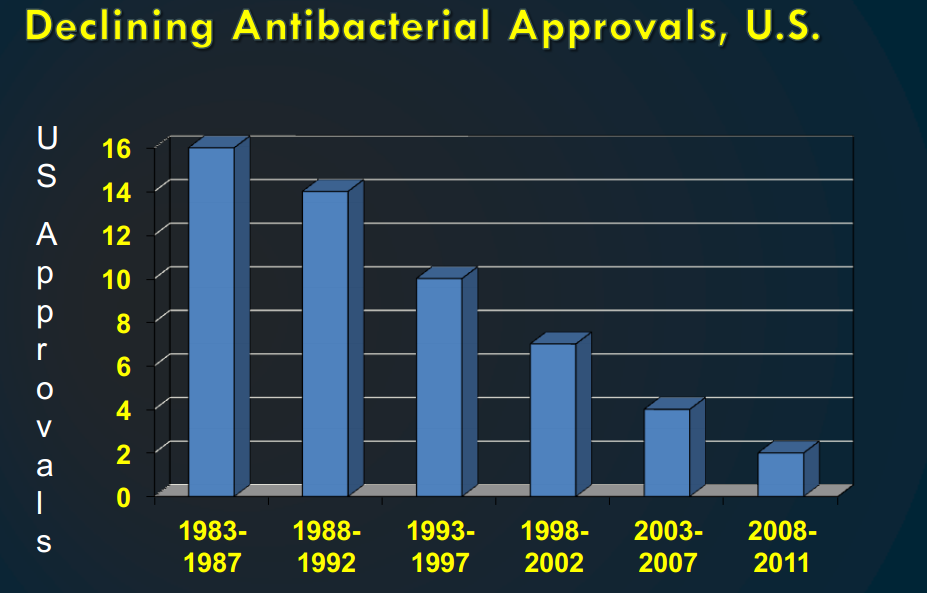
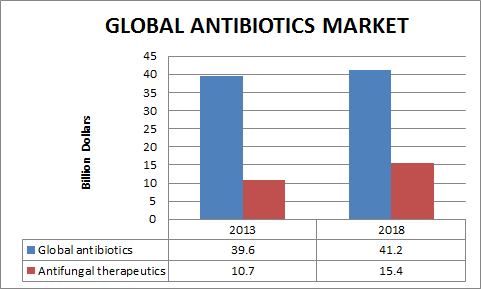
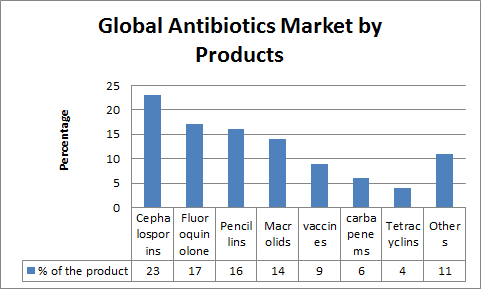
-
Antimicrobial-additives-market
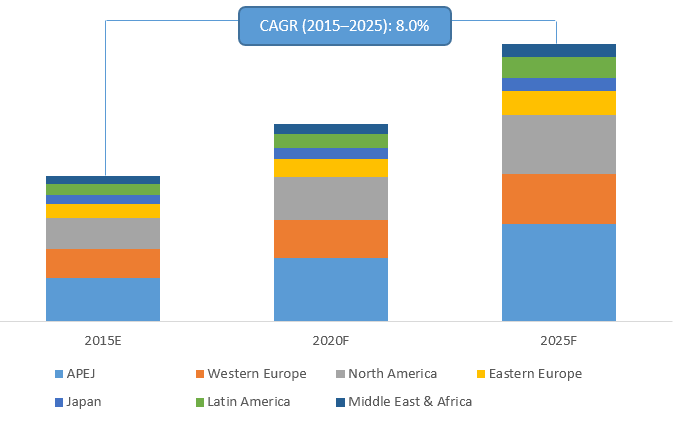
-
Antimicrobial-surveillance of antimicrobial resistance

-
Commonly used antibiotics with there increased percentage of resistance
